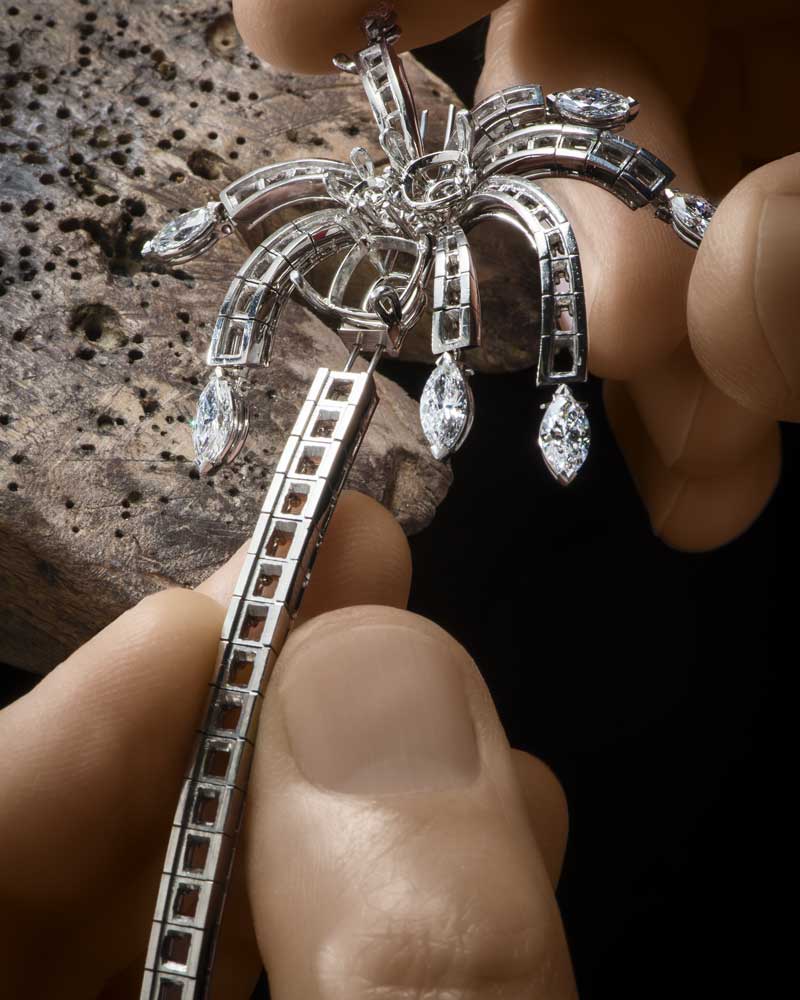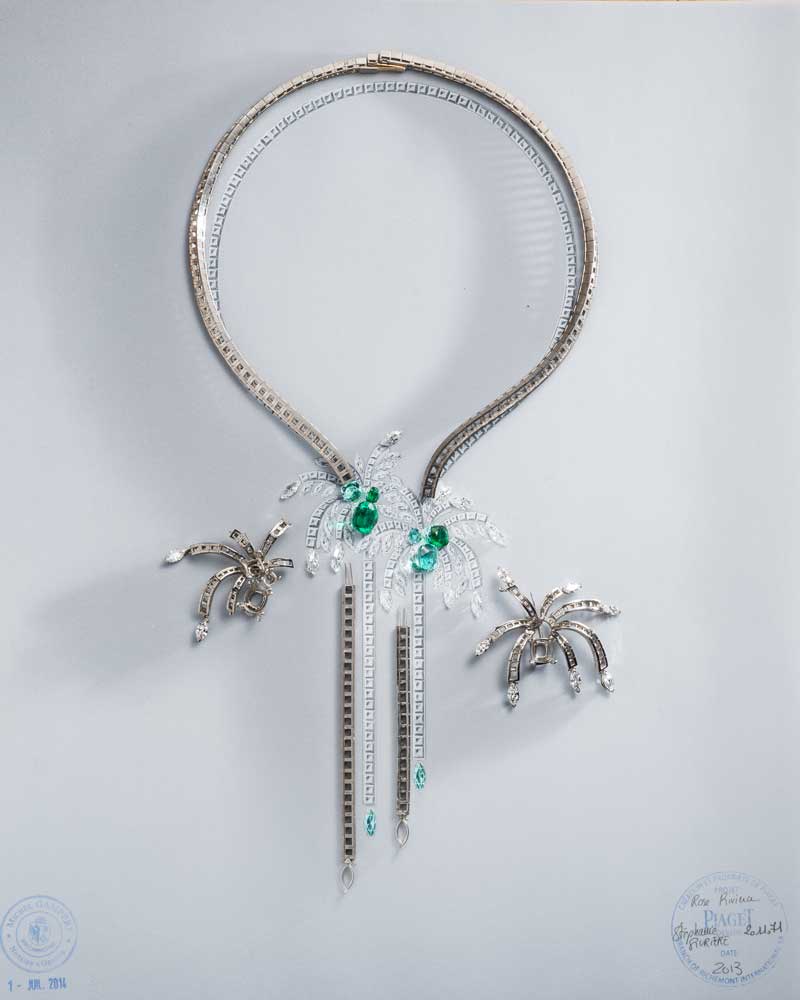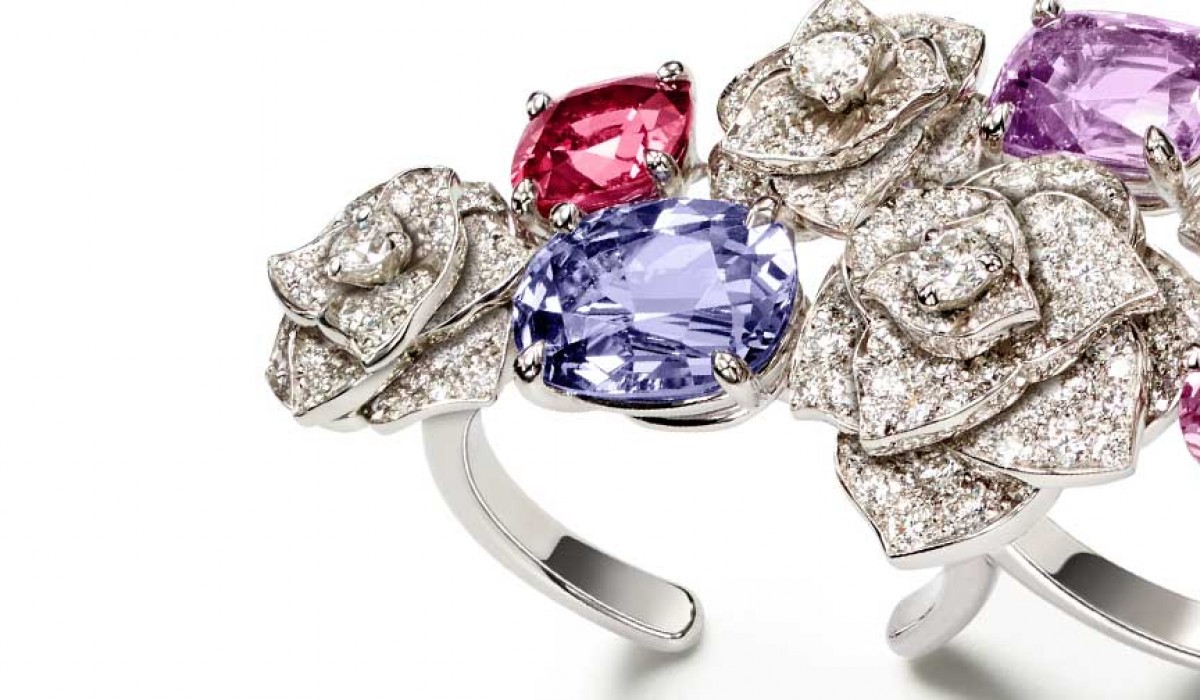Yves Piaget, the charismatic and charming chairman of Piaget
Piaget’s watches and jewelry speak to the fashion of the times. Yves Piaget, the charismatic and charming chairman of Piaget, says that fashion has undergone a great deal of change in the past few years and that the bold styles that were commonplace in the 1960s, 1970s would not work in today’s world ·
Words Anthony DeMarco
“There are so many changes in the past few years. There’s political change, marketing change, economic change, social changes. Of course our fashion of jewelry and watches lives parallel to the evolution of society. I would say that today we work more towards pure designs,” Mr. Piaget says from the second floor of the Piaget New York boutique. “That’s why our Altiplano (ultra-thin) watches are in demand because it is really a very discreet watch and we are more into discretion compared to the ’60s and the ’70s where the fashionable watches were much more flashy and showy. Today, socially speaking, people prefer to be more discreet. But there are still plenty of people who want the finest, the best and the nicest; and are ready to pay the difference.”
Mr. Piaget made a rare appearance in New York in March to promote “Piaget,” a coffee table book that details the company’s history since its founding. He has been involved with the company for the past 50 years of the company’s 140-year history. The boutique was also showing Piaget’s new Mediterranean Garden High Jewellery Collection.
[ts_row] [ts_one_third]  [/ts_one_third] [ts_one_third]
[/ts_one_third] [ts_one_third]  [/ts_one_third] [ts_one_third]
[/ts_one_third] [ts_one_third]  [/ts_one_third] [/ts_row]
[/ts_one_third] [/ts_row]
He says that it was important to him that the book is about the people who work at Piaget. The company currently employs approximately 1,000 people worldwide, including more than 400 artisans at its locations in La Côte-aux-Fées and Geneva. They perform all of the functions of developing, designing and producing watches, movements and jewelry.
“What I wanted to do is to prove to our customers that behind the name of Piaget there are people. Still today the most important people in the company are our workers: artisans, jewelers watchmakers, designers, engineers,” he says. “Thanks to them we are able to present our watches and jewelry collections. This book illustrates very much that spirit, basically about human beings and then about the collections. So the 140 years are really described by both human terms and the evolution of the collections. This is for me very important because it’s a proof of a legitimacy that Piaget can show (to others) that lasted for four generations in watchmaking and jewelry.”
Despite developing all of its movements in house, and breaking many records for its ultra-thin calibers, it may surprise some that Mr. Piaget sees his watches primarily as fashion pieces.
“We are first a fashion watch and then a technical watch,” he says. “Piaget was always known for having a wide collection with many designs. We created the fashion of watches and we lead the fashion of watches having the ultra-thin movements in the ’50s and ’60s, having been the first to decorate our watches in semi-precious stones lapis lazuli, opal tiger’s eye, jade. We were the first to use the thinnest quartz electronic movement. That’s really our identity. Our marketing is also influenced by this fashion of watches and I would say that we promoted our watches in a more flashy way than our colleagues… The last 15 years we (created) a number of new thin calibers and Piaget today can say it has a great and long-live legitimacy in mechanical watches.”
The company began creating jewelry in the 1960s to complement its watches. Mr. Piaget says jewelry was a natural progression for the company because it already had the skills in house to produce jewels. The company dramatically increased its jewelry business in the past 15 to 20 years. Today, high jewelry and other jewelry collections now account for a more than a third of total sales for the company.
“It was a natural link as we are in high-end luxury watches. All of our watches are in gold and platinum. Most of our ladies watches are set with diamonds and precious stones. So my forbearers and my generation always considered a watch not as timepiece but as a piece of jewelry,” he says. “In the 1960s we started to develop the jewelry business because our company is vertically integrated. It means a Piaget watch always had been manufactured A to Z in our workshops. We have on one side, engineers, technical watchmakers who manufacturer the movements and on the other side we had the jewelers who design the watch and the cases and bracelets and all the settings. We have lapidaries, we have gem cutters we have gem setters all under the same roof. I think it was quite natural asking our designers not to design exclusively watches but to let their imagination go and design jewelry. It’s the same world, the same work to design jewelry. Now we can say that we are watchmakers and jewelers.”
“But still the company is still human size,” he says. “We know all of our calibers. It is absolutely (important) to reinforce that link inside and with our customers outside.”
[ts_row] [ts_one_half]  [/ts_one_half] [ts_one_half]
[/ts_one_half] [ts_one_half]  [/ts_one_half] [/ts_row]
[/ts_one_half] [/ts_row]






